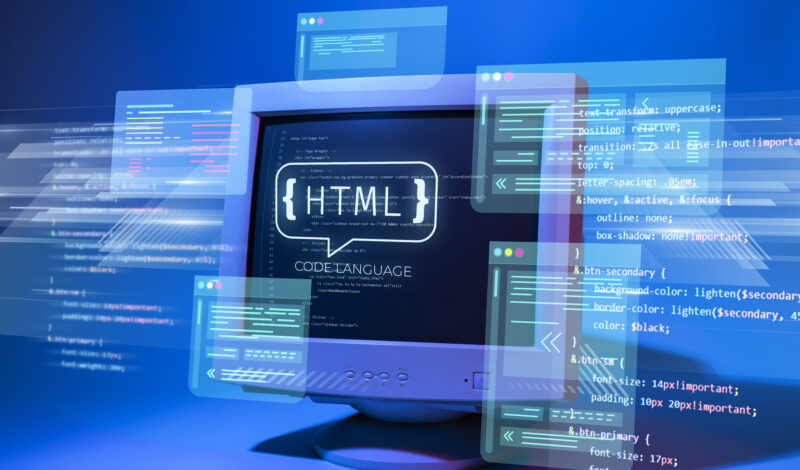The web development landscape is constantly evolving, and staying ahead of the curve is crucial for developers of all skill levels. As we approach 2024, exciting new trends are emerging, promising to revolutionize how we build and experience the web. This blog post dives into four key trends that are poised to shape the future of web development:
1. AI Programming Tools: Your New Coding Partner
AI is no longer just science fiction; it’s rapidly becoming a reality in the developer’s toolbox. In 2024, expect to see a significant rise in the adoption of AI-powered programming tools. These tools will go beyond simple code suggestions and auto-completion, offering functionalities like:
- Automated code generation: AI can assist in generating basic code snippets or boilerplate code, freeing up developers to focus on complex logic and business requirements.
- Intelligent debugging: AI-powered debuggers can analyze code and pinpoint potential issues, saving developers valuable time and effort.
- Refactoring and code optimization: AI can suggest improvements to existing code, making it more efficient and maintainable.
While AI won’t replace developers entirely, it will undoubtedly become a valuable partner, boosting productivity, improving code quality, and lowering the barrier to entry for new developers.
2. Dark Mode: A Reigning Preference
The love for dark mode continues to surge in popularity. Users appreciate its eye comfort, particularly in low-light environments, and its sleek aesthetic appeal. In 2024, expect seamless dark mode experiences to become the norm across:
- Websites: Developers will prioritize offering well-designed dark themes that provide a comfortable and visually appealing browsing experience.
- Web applications: Dark mode options will become standard in web apps of all types, ensuring consistent user experience across platforms and devices.
- Design tools and frameworks: Design tools and frameworks will provide built-in support for creating and managing dark themes, making it easier for developers to implement them seamlessly.
Embracing dark mode is not just about aesthetics; it shows attention to user comfort and preferences, potentially leading to increased user engagement and a positive brand perception.
3. WebAssembly Takes Center Stage
WebAssembly (Wasm) is a game-changer, allowing developers to write code in languages like C++ and Rust that can run efficiently within web browsers. This has opened up exciting possibilities for creating:
- High-performance web applications: Wasm can be used to build complex and resource-intensive applications, previously only possible with native code, resulting in faster loading times and smoother user experiences.
- Interactive experiences: Wasm’s capabilities go beyond simple web pages, enabling the development of interactive experiences like 3D graphics, real-time gaming, and advanced simulations within the browser.
- Integration with existing codebases: Wasm allows for seamless integration with existing code written in other languages, making it easier to leverage existing functionality and resources.
As Wasm frameworks and tools become more mature and widely adopted in 2024, expect to see a surge in Wasm-powered web applications, pushing the boundaries of browser capabilities and user experiences.
4. Embrace the Multi-Experience
The traditional focus on “web development” is evolving to encompass a broader spectrum of user experiences. In 2024, the concept of multi-experience development will gain significant traction:
- Moving beyond the web: Developers will need to consider how web applications can adapt and function seamlessly across various devices and platforms, including smartwatches, AR/VR headsets, connected appliances, and more.
- Responsive design on steroids: Responsive design principles will need to be extended beyond screen size to create adaptable user interfaces that cater to different interaction methods, such as voice commands, touch gestures, and eye tracking.
- Progressive Web Apps (PWAs): PWAs will play a crucial role in multi-experience development, offering app-like experiences within the browser, regardless of the device or platform.
By embracing multi-experience development, developers can create applications accessible to a wider audience and cater to the evolving needs and preferences of users across diverse platforms and devices.
Staying Ahead of the Curve:
These four trends represent just a glimpse into the exciting future of web development. By staying informed and equipping yourself with the necessary skills, you can position yourself for success in this ever-evolving field. Here are some additional tips to stay ahead of the curve:
- Continuously learn and adapt: Devote time to learning new technologies and trends through online courses, tutorials, and industry publications.
- Experiment and explore: Don’t be afraid to experiment with new tools and frameworks to broaden your understanding and skillset.
- Engage with the community: Connect with other developers through online
Reach out now ! https://growgraphs.com/





